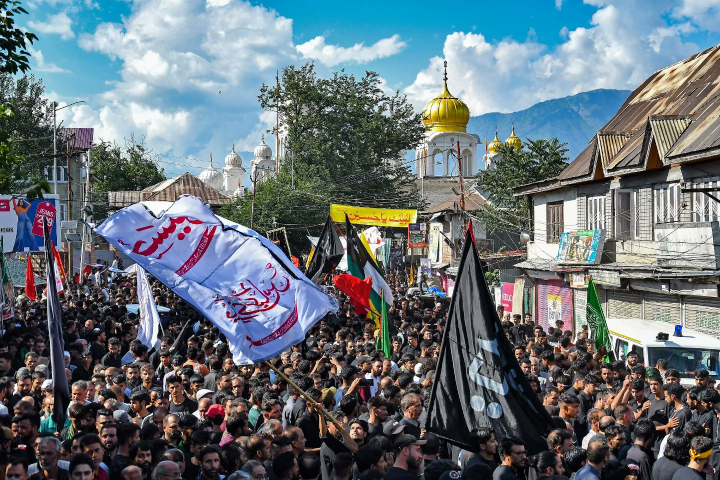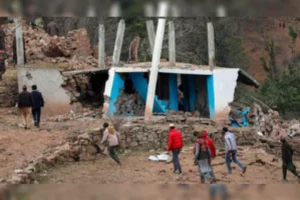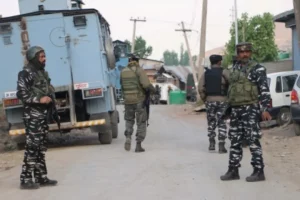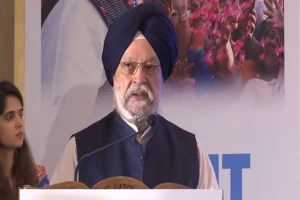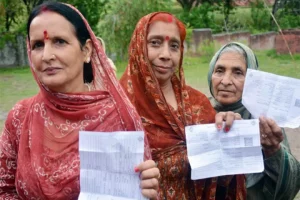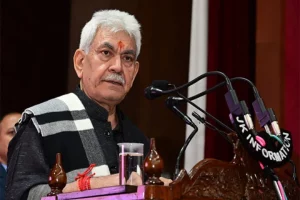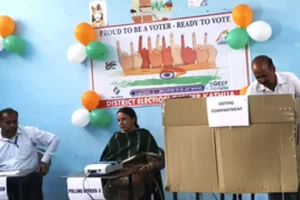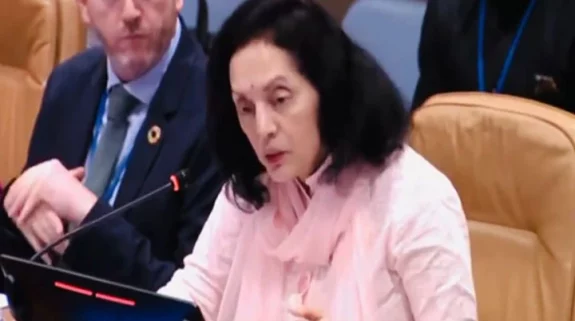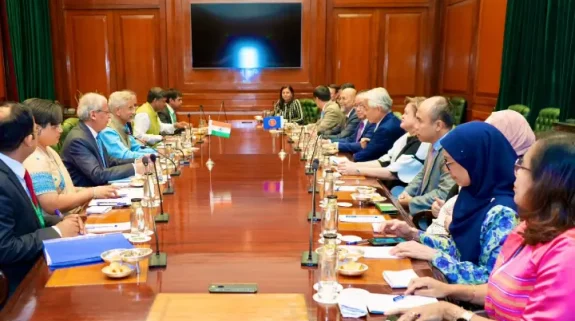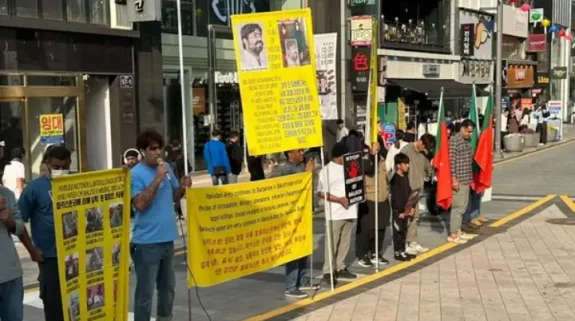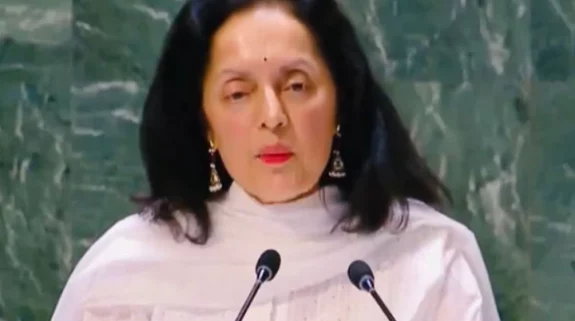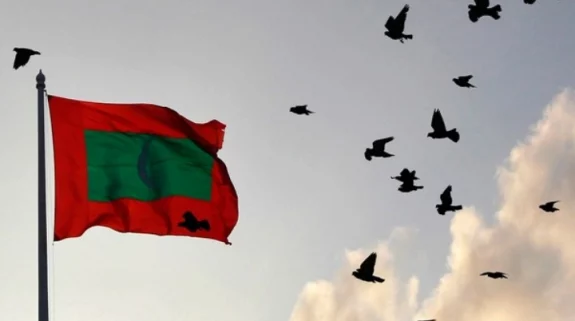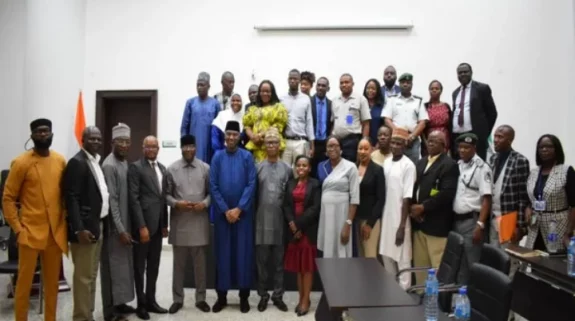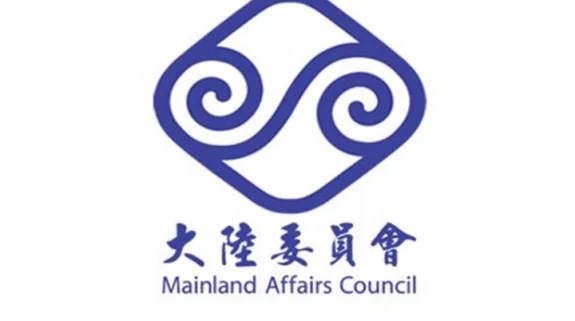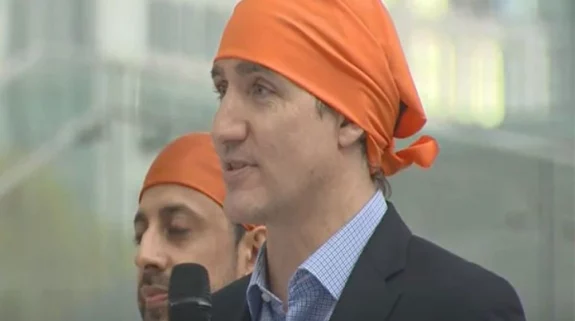After a gap of 34 years, the Shia community in Kashmir took out a Muharram procession on its traditional route in Srinagar on Thursday. The procession, which began in Gurubazar and ended at Dalgate, was attended by thousands of mourners who chanted slogans and beat their chests in remembrance of the martyrdom of Hazrat Imam Hussain (AS).
The procession in Kashmir was banned in 1989, following the outbreak of militancy in the region. However, the BJP government lifted the ban last year.
The government claims that this step has been taken as part of its initiative to promote peace and normalcy in Kashmir. But this step also unveils a longstanding bond between two communities- The Shia Muslims and Hindus.
Today after 30 years #Muharram procession will be allowed in #Kashmir
Congrats to our #Shia brothers & sisters ❤️🙂
Today after 30 years Pahari community finally got ST status.
Congrats to our #Pahari brothers & sisters ❤️🙂— Yana Mir (@MirYanaSY) July 26, 2023
One of the most striking examples of this bond is the tradition of the Haloka Tazia in Nashik, Maharashtra. Every year during the month of Muharram, Shia Muslims in Nashik build a replica of the tomb of Imam Hussain, who was martyred in the Battle of Karbala in 680 CE. The Haloka Tazia is then carried in a procession through the streets of Nashik, and it is traditionally lifted by Hindu followers. This tradition is a symbol of the shared grief of Shia Muslims and Hindus over the martyrdom of Imam Hussain, and it is a reminder of the long history of cooperation between the two communities.
In the city of Lucknow, the Shia and Hindu communities have jointly restored mosques, temples, and other historical sites, and they have also worked together to promote tourism in the city.
In Varanasi, the Shia and Hindu communities have jointly managed the Kashi Vishwanath Temple for centuries.
In Gujarat, the Bohra community, which is a branch of Shia Islam, and In Maharashtra, the Ismaili community, which is another branch of Shia Islam, have worked with the Hindu majority to promote education and social development.
When speaking of the Hindu- Shia bond, one cannot simply overrule the story of Hindu man Rahab Sidh Dutt. He belonged a Mohyal Brahmin community from Punjab, India. He was a soldier who lived in Baghdad around the time of the Battle of Karbala in 680 CE. When he heard about the impending battle, he decided to join Imam Hussains forces, even though he was a Hindu.
Rahab Sidh Dutt fought bravely in the battle, and he was eventually killed.
According to legend, Rahab Sidh Dutt was able to defeat seven of Yazid-1’s soldiers in single combat before he was finally killed. His head was eventually taken to Damascus, but it was never returned to his family.
His story is said to have inspired the Mohyal community to adopt the surname ”Hussaini” as a sign of their respect for Imam Hussain and his sacrifice. His sacrifice is remembered by the Mohyal community to this day. They believe that he was a true hero, and they honor him as a symbol of their commitment to religious tolerance.
Governor of Jammu Kashmir, Shri Manoj Sinha at the Ashura procession
Shias have survived in India because of Hindus, not Muslims. #Hussain pic.twitter.com/ykQZ6ZGo0P— #SengeSering ས།ཚ། (@SengeHSering) July 29, 2023
The story of Rahab Sidh Dutt is a reminder that people of different faiths can come together to fight for what they believe in. It is also a reminder that even in the face of death, there is always hope.
While between Hindus, Shia Muslims have always felt safe and protected, they were no less than ghettoized in several Sunni Muslim dominated lands.
The timeline of Kashmir’s history reveals 10 deadly phases of plunder, loot, and massacres of Shia Muslims, which came to be known as Taraajas. Shia Muslims were suppressed, their habitations were plundered, people slaughtered, libraries burnt and their sacred sites desecrated during the Taraajas period spanning 300 years from 1548 to 1872, right through the Mughal Era.
This explains the reluctance of Shia community to actively participate in Anti India secessionist movements in Kashmir that used to be funded by Pakistan. – another land dominated by Sunni Muslims, where Shia intolerance is rampant.
Shias in Pakistan are ‘almost equal’ to other segments of society except that they face ‘target killings’ across every corner of Pakistan, especially in Parachinar, Dera Ismail Khan, Quetta, and Karachi. Educated people are targeted more.
All terrorist organizations, despise Shias more than anything else. They consider them an imminent threat and describe them as” snakes in the courtyard.” Some of them do not consider killing Shias inside Pakistan, an appropriate strategy. Those involved in killing Shias inside Pakistan are mostly ‘Deobandi’ organizations.
” Ahl-i-Hadith “, also called Salafis, who are well known to Indians because of Jamat ud dawa (Hafiz Saeed), do not believe in ‘killing Shias inside Pakistan’ and focus more on India. Barelvi Sunnis are perhaps the most peaceful because they do not have any armed presence inside Pakistan. Secondly, their religious beliefs are closer to Shias.
No Pakistani news media reported on the killing of Syed Hassan Ali, who was shot dead in Jan 2018, in Dera Ismail Khan. He was an ordinary young boy. Nothing special, just” Shia.” There are hundreds of such stories in this town.
Pakistan’s financial capital Karachi, is a major killing ground of Shia Doctors. Dr Ali Haider, an eye surgeon was Killed along with his son in Lahore (2013). Social activist and poet Sibt- e- Jafar was also called Soz Khawan and took keen interest in providing education to underprivileged people (including Hindus). He was a humanitarian. The Shia preacher was Killed in 2013.
When Taliban captured some Pakistan Army soldiers, they let everyone go, except Laiq Hussain. They slaughtered him with a knife, made a video of the beheading and sent it to his family. Laqis crime? You guessed it right.
Aitezaz Hussain stopped a suicide bomber from entering a school at the expense of his life. But why did the bomber choose his village? Your guess is as good as mine. Hundreds of Shias get killed while praying when their mosques are bombed in Sunni dominated towns like in Mazar-e-Sharif, Afghanistan in April 2022 and in Peshawar Pakistan in March 2023.
Social and economic discrimination against Shias is a real thing in Pakistan and Afghanistan, where you would never see Sunni Muslims hiding their identities at work place or social gatherings, but numerous Shias are reluctant to tell people about their faith for the fear of losing their jobs or business opportunities.
The feeling of” lurking danger” which plagues Shias in Pakistan is totally in contrast with the feeling of” inclusivity and unconditional love” which they feel in India. Which is why Shia Muslims have always been cherished and among the greatest assets to India and its sovereignty. The Muharram procession allowed in Kashmir after 34 years, enabled by the so-called Hindu Nationalist govt, is yet another reminder of the rich history of Hindu-Shia bonds.






